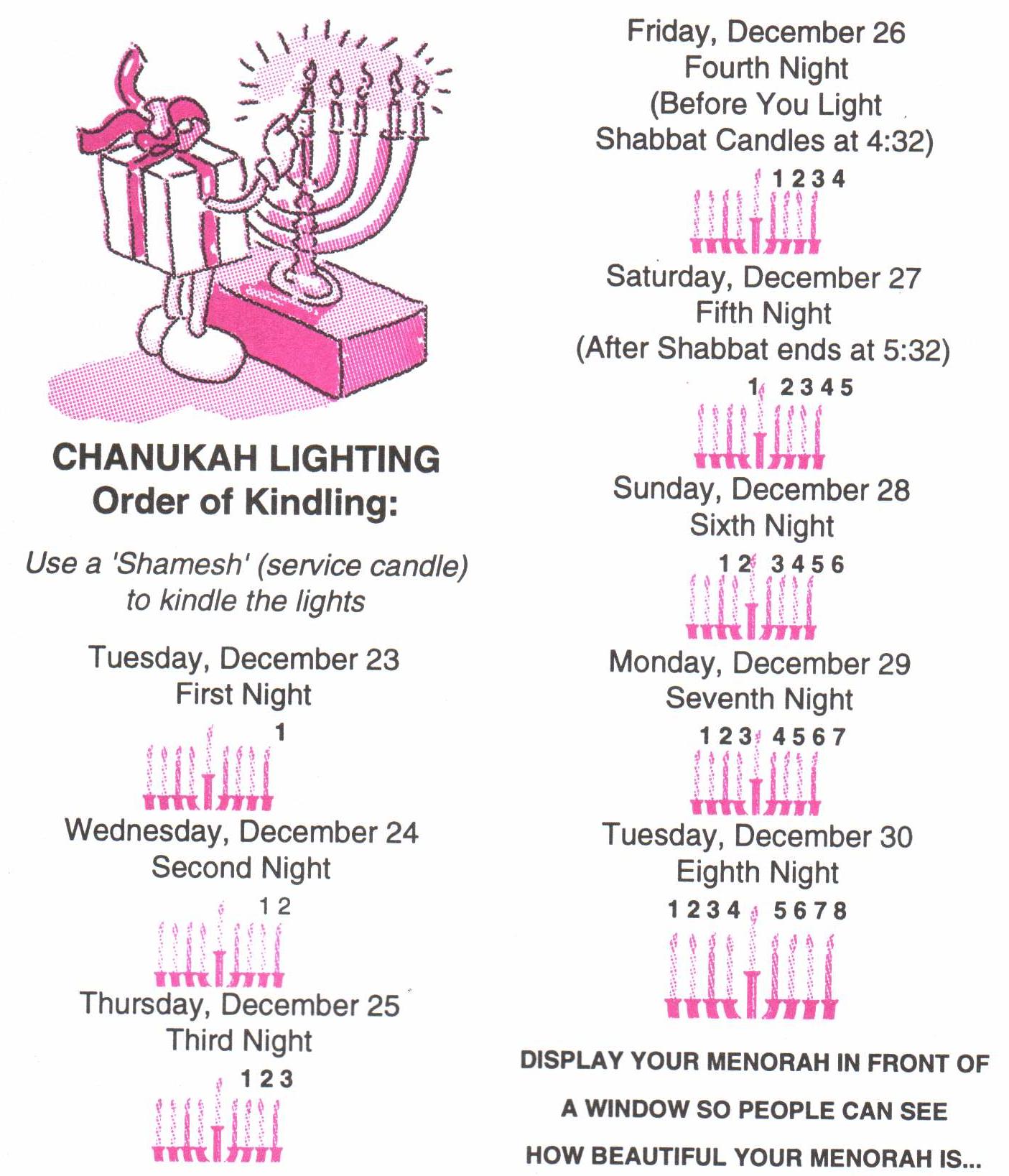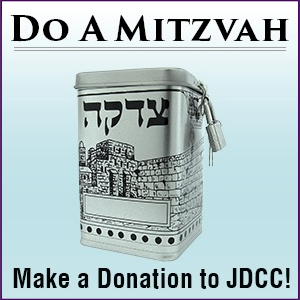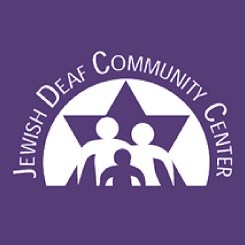Chanukah

Chanukah, which always falls on the twenty-fifth of Kislev, is usually held during the month of December. As a result, it can be a difficult time for Jewish people especially children who are exposed to Christmas decorations and trimmings in their surroundings.
Christmas is a Christian holiday to celebrate the birth of Jesus. Many symbols are used to celebrate Christmas such as a Christmas tree, Santa Claus, candy canes, wreaths, ornaments, or nativity scenes.
What Is Chanukah All About?
Chanukah is a eight-day holiday which celebrates the Jewish people defeating the Syrian-Greek armies and reclaiming the Temple in Jerusalem. After cleaning the Temple which was overgrown with vines and weeds, they finished their work on the twenty-fifth of Kislev. As they gathered to light the menorah, however, they could only find one small jar of pure olive oil which would last only one day. To their surprise, however, the oil burned and burned for eight days and nights until they could produce more oil. Thus, the eight-day long Chanukah holiday.
Symbols?
So when we see a menorah or dreidel, we think of Chanukah. And don’t forget the hot latkes (potato pancakes) with apple sauce. And, oh yes, we may eat sufganiyot (jelly donuts). Why? They’re fried in hot, fresh oil to remind us of the miracle of the oil in the menorah that burned for eight days!

during eigth evening of Chanukah, 1983
Symbols are important to children because they are influenced by them. Other Jewish symbols are Shabbat candles, Shofar, Sukkah, Lulav, Estrog, Megillah and Grager, Matzah and Seder plate, Torah, Kiddush cup and Challah. These symbols belong in Jewish homes and synagogues, not in Christian homes.
So for children to notice both Christmas and Chanukah symbols and traditions around the same time can be rather confusing. Children may want to imitate Christmas, not realizing that they are Christian symbols and have no religious meaning for Jewish people and are not part of their religion.
Chanukah Traditions
During Chanukah, also known as the ‘Festival of Lights’, we light an additional candle each night from left to right for eight nights until we have a total of eight candles. There is a ninth candle, the ‘shamash’, which is used to light the other candles. It is usually higher, lower or in the front to stand out as not being one of the regular candles.
We also play dreidel, a traditional game, eat potato latkes, give and receive Chanukah gelts (money) and gifts each day for eight days to celebrate how the menorah in the Holy Temple stayed lit for eight days on very little oil.
Nowadays, some people use oil, (preferably olive oil) instead of candles because it is a product closely identified with the Land of Israel. Those who follow this custom feel closer to the original celebration, in which oil was used.
Three Candle Blessings
During the first night of Chanukah, three blessings are recited. The first two blessings are for the kindling of the lights and the miracle of Chanukah, while the third blessing, called Shehecheyanu, is recited on the first night of all Jewish holidays. This blessing expresses personal gratitude for being alive and well in a position to observe the Jewish holiday.
New Interfaith Book
A new book has come out for the first time that is specifically written for interfaith families. Titled ‘Bubbe and Gram’, this touching story is about a child who loves and learns from her two very different grandmothers. Her Jewish bubbe tells stories about Moses, and the Maccabees, lights the Shabbat candles, and shares Passover with her grandchild. Her Christian Gram dyes Easter eggs with her granddaughter, recites the Lord’s Prayer, and tells the Nativity story. Each grandmother shares the love and richness of her own tradition with her grandchild, while still respecting the other religious tradition that is part of the girl’s life.
Sending Holiday Cards
During JDCC’s Rosh Hashanah group discussion on ‘Interdating and Intermarriages’, one participant commented that he disliked receiving Christmas cards from his friends. A suggestion was to send greeting cards with no Christmas symbols or colors on it. With computers, you can create personalized cards! That also means using regular stamps with no Christmas symbols. You can also purchase Chanukah stamps.




